Continuous Integration and Continuous Deployment (CI/CD) practices are critical to maintaining high-quality, agile development workflows. This post walks through setting up a CI/CD pipeline for an Azure SQL Database using Azure Repos and Azure Pipelines.
Prerequisites
Before getting started, make sure you have:
- An accessible SQL Database resource (either hosted on Azure or on-premises)
- Visual Studio installed with the SQL Server Data Tools (SSDT) extension
Step 1: Create a Visual Studio SQL Database Project
Start by creating a SQL Server Database Project in Visual Studio. This project will serve as the source of truth for your database schema, stored procedures, and other SQL objects.
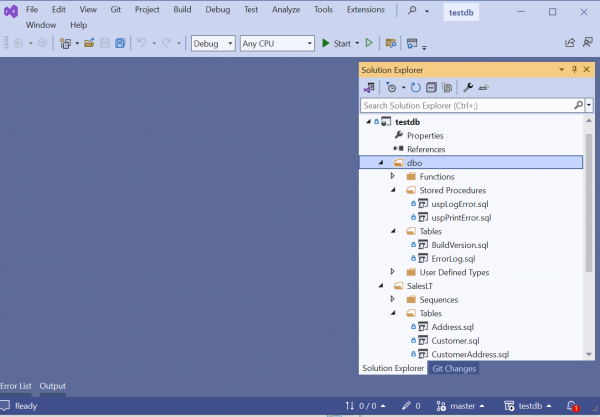
Step 2: Push to Azure Repos
- Initialize a Git repository for your database project.
- Push the project to Azure Repos to enable version control and collaboration.
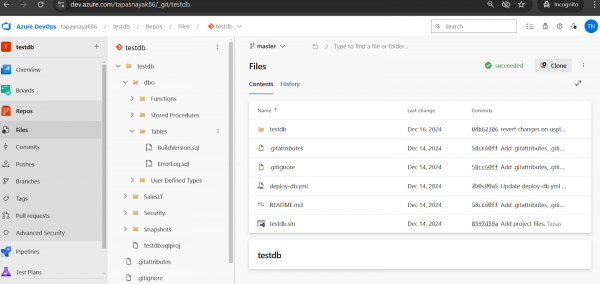
Step 3: Configure the Azure Pipeline
Set up a new pipeline in Azure DevOps using a YAML file. The pipeline should include tasks to:
- Build the Visual Studio database project
- Copy the generated .dacpac file
- Deploy the .dacpac to the target SQL Server database
Here’s a sample YAML file:
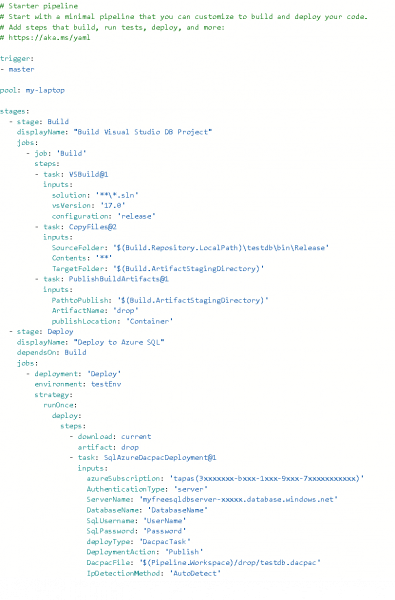
Step 4: Commit and Collaborate via Pull Requests
Whenever you:
- Modify a stored procedure
- Create or change a table
- Add any new SQL objects
…make the changes in your Visual Studio project and commit them to the repository. Then, raise a pull request to the target branch for code review and validation by your team.
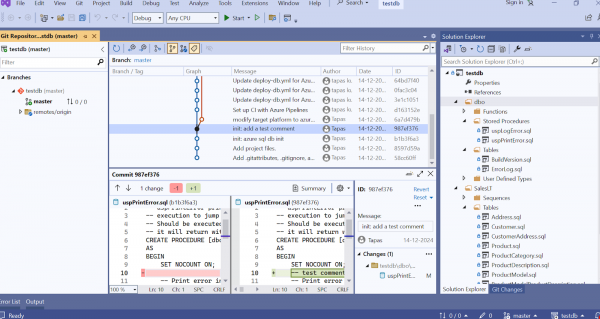
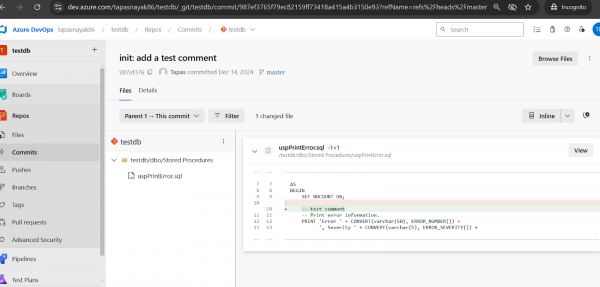
Step 5: Automated Deployment and Release
Once your pipeline is triggered (e.g., after merging a PR), it will:
- Automatically deploy changes to the target database environment defined in the pipeline
- Optionally, stage artifacts for further deployment using a Release Pipeline
You can also add pre-deployment approvals, ensuring an admin or reviewer signs off before production changes go live.
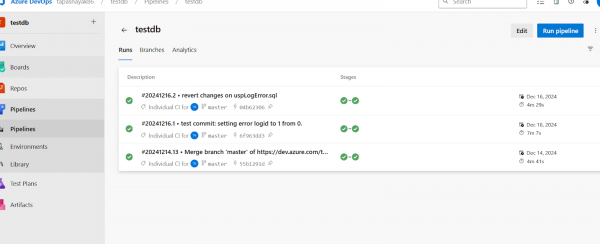
Step 6: Verify the Changes
After deployment, connect to the target SQL database using SQL Server Management Studio (SSMS) to verify that your committed changes have been applied correctly.
Benefits of This Approach
Implementing CI/CD for SQL databases offers several advantages:
- Eliminates manual script execution
- Tracks change history through source control
- Enables collaboration with a single source of truth
- Improves deployment confidence with automated testing and approvals
By bringing CI/CD practices to your SQL databases, you can streamline deployments, reduce human error, and enforce higher development standards across your team.



